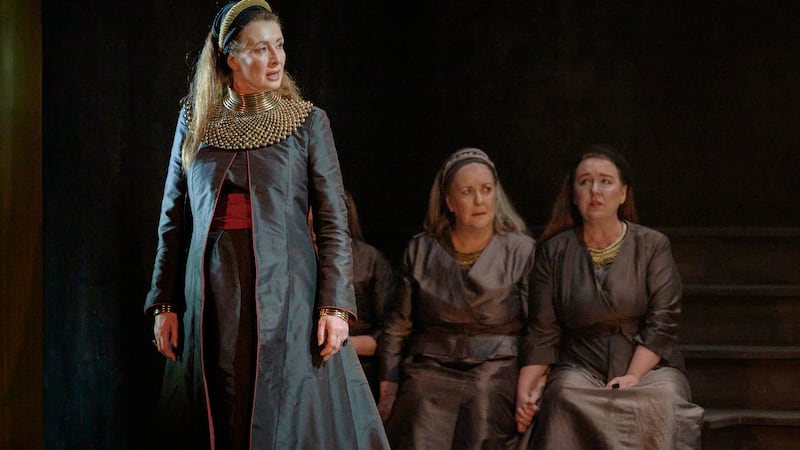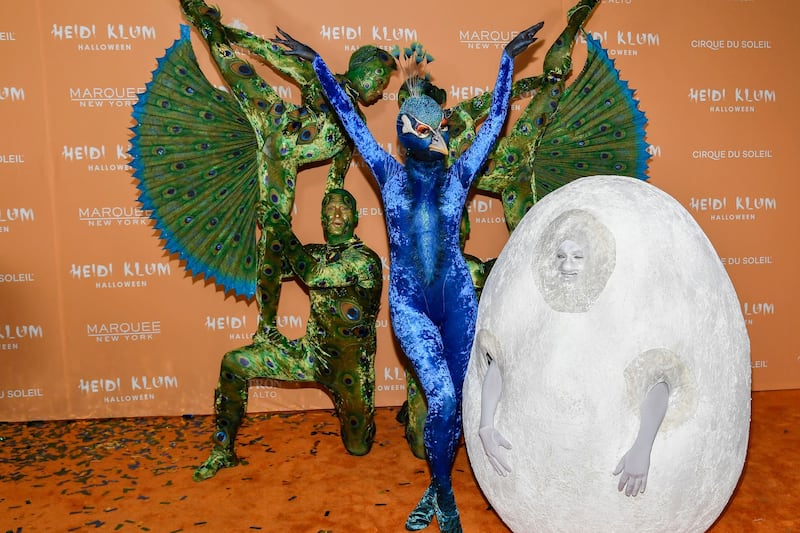Given that you are probably dressed up in cobwebs and spiders, it’s time to look back at a previous Bluffer about feast days in Ireland.
One of the Bluffer’s favourite books is The Year in Ireland by the late lamented Kevin Danaher.
The subtitle is Ireland’s Calender Customs and the book paints a vivid picture of the live of ordinary people in Ireland in bygone centuries and how the year was broken by various feasts, some of which have lost their relevance.
Lá na Féile Bríde -Saint Brigid’s Day (1 February) was more important than it is today with feirmeoirí - farmers hoping for good weather to speed the spring ploughing and digging.
Then there was Lá Fhéile Muire na gCoinneal - Candlemas, An Carghas - Lent and An Cháisc - Easter.
Some were religious feasts and others dealt with the land and agriculture in that idiosyncratically Irish combination of Christianity and paganism that survived for millennia. Laethanta na Bó Riabhaí - are called in English, the borrowed days although the Irish name refers to an old story, An tSeanBhó Riabhach - the old brindled cow. (BTW, brindled means “brown or grey streaked or patched with a darker colour.”)
Danaher tells the story thus: “According to the old story An tSeanBhó Riabhach, the old Brindled Cow boasted that even the rigours of March could not kill her, whereupon March borrowed three days from April, and, using these with redoubled fury, killed and skinned the poor old cow. Henceforth, the first three days of April traditionally bring very bad weather ...”
A great story, you’ll agree.
Oíche na Féile Eoin is the eve of St John (the Baptist) and most of you will know that oíche means night but it also means the eve of something.
The feast of St John on June 23 also marked midsummer and the lighting of tinte cnámh - bonfires.
Lúnasa, the Irish word for the month of August, was also in Celtic mythology, a festival said to have been begun by the god Lugh, as a funeral feast and games commemorating his foster-mother, Tailtiu, who died of exhaustion after clearing the plains of Ireland for agriculture.
Tonight however is Oíche Shamhna aka Halloween a night for taibhsí ghosts, cnónna - nuts, cailleachaí - witches, pisreoga - superstitions and cleasanna - tricks.
“November Day, Samhain itself (the first day of November) is an ancient Celtic festival heralding the first day of winter and Danaher gives us an idea as to how frightening it must have been in County Limerick through this
account written at the end of the 1800s: “It was called púca night and oíche na sprideanna - night of the spirits because of the old people’s belief that both the fairies and the ghosts of the dead were active then.
“In the Rathkeale area, the púca was supposed to spit on and blight blackberries and other fruits. Children were forbidden to touch them from that date lest the blight should affect themselves.”
Scary or what? Happy Halloween!
CÚPLA FOCAL
Lá na Féile Bríde - (laa ne fel breeja) - Saint Brigid’s Day
feirmeoirí (feramoree) - farmers
Lá Fhéile Muire na gCoinneal (la ella mwirra ne gunyil) - Candlemas
An Carghas (un karagiss) - Lent
An Cháisc (un khaashk) - Easter
laethanta na Bó Riabhaí (layhanta na baw reeawee) - the borrowed days
An tSeanBhó Riabhach (un chan waw reeawakh) - the old brindled cow
Oíche na Féile Eoin (eeha na fel’ owen) - the eve of St John
tinte cnámh (chintcha craow) - bonfires
Lúnasa (loonissa) - August
Oíche Shamhna (eeha haowna) - Halloween
taibhsí (tyvshee) - ghosts
cnónna (crawna) -nuts
cailleachaí (kyleyakhee) - witches
pisreoga (pishrawga) - superstitions
cleasanna (classana) - tricks
oíche na sprideanna (eeha na sprigdenna) - night of the spirits







